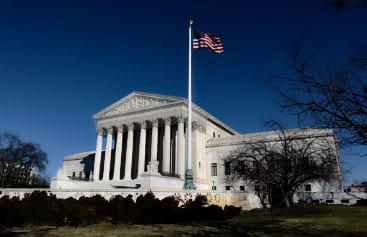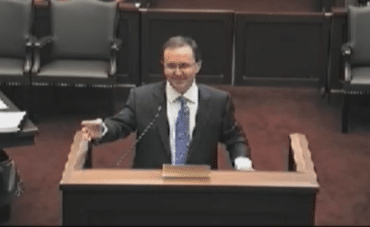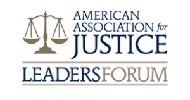
After lower courts determined that the Nevada Division of Forestry was guilty of gross negligence in the Little Valley Fire the case has made it’s way to the Supreme Court of Nevada. On November 6, 2018 Matthew Sharp, representing victims of the fire, presented his argument to the court. Sharp argued the court should not entertain a writ, pointing out the evidence presented at the lower court is not available to the Supreme Court. Without the benefit of the complete record, Sharp reasoned, the case should be remanded for further proceedings so the case can be decided using the full record.
The Little Valley Fire was the result of a controlled burn by the Nevada Division of Forestry that grew wild and destroyed 23 homes in October of 2016. A Washoe County jury had held the Nevada Division of Forestry accountable by finding it acted grossly negligent as it failed to exercise any amount of care.
The full proceeding, along with Mr. Sharp’s argument can be can be heard here.
Below is the automated, rough translation of Mr. Sharp’s argument. It begins at the 26:51 mark of the audio.



26:51 mr. sharp. Thank You your honors
26:54 mr. Hernandez and I are presenting on
26:58 behalf of the real parties in interest
27:00 so for judicial economy your time so to
27:05 speak we we had the idea that mr.
27:08 Hernandez would be available to
27:10 primarily address the public use aspect
27:14 that mr. Van Dyke just mentioned I was
27:17 going to deal with the intent element as
27:19 well as comments as to whether this is
27:22 timely as a read whether this should be
27:25 considered so I hope that we didn’t want
27:28 to repeat ourselves so that was the idea
27:30 mr. sharp could you at least you said
27:33 you would could you start with justice
27:35 Pickering’s pointed to why we should or
27:38 shouldn’t entertain the writ well our
27:41 point is reflected in the brief is this
27:43 is premature that the court should not
27:46 entertain the read if you look at
27:48 exactly what Judge Freeman did he simply
27:51 applied the elements to fret to the
27:54 allegations of the complaint and denied
27:56 a motion to dismiss that’s it I think
27:59 what this case risk is were fraught with
28:03 factual issues as you can tell in our
28:06 supplemental filings as you can tell was
28:08 going there’s a great deal of evidence
28:11 that was presented at the lower court
28:13 that this court doesn’t have the benefit
28:15 of and I think that from a policy
28:19 rationale as dangerous for a court to
28:22 make decisions of this import without
28:24 the factual record we talk about for
28:27 example let me raise an issue the serve
28:29 and I talks about in
28:31 10th well I mean I can tell you as an
28:35 officer the court we had direct evidence
28:37 of intent you don’t have that
28:39 information just judge Freeman wasn’t a
28:43 is not evaluated that information in the
28:46 context of a taking so that’s one
28:48 example that I would say this is
28:50 premature
28:50 and I think the other thing that we
28:55 should be guarded against and I guess I
28:56 analogize this to a jury trial because I
29:00 think what’s really going on here it’s
29:02 not an intent to clarify the law the law
29:05 of the elements and fritzsche are clear
29:07 what the state is proposing is to adopt
29:12 a federal standard and in a very strict
29:16 federal standard that arguably the US
29:18 Supreme Court has not even adopted and
29:21 imposed that upon the state well if you
29:24 do that in it if for example if I were
29:28 trying to adopt a new cause of action I
29:31 plead the cause of action if it’s
29:33 dismissed on a motion to dismiss I
29:35 appeal if it the motion to dismiss is
29:38 denied we go to the motion for summary
29:40 judgment if that’s denied we go to trial
29:43 at trial I propose a jury instruction
29:45 and once the record comes to this court
29:49 you can make an informed decision about
29:51 what it is that’s precisely being
29:54 requested by the appellant or by the
29:57 aggrieved party so this court can make a
29:59 decision and I think that’s
30:00 fundamentally a problem in this case so
30:04 what exactly the state is seeking to
30:07 impose and in my view is seeking to
30:11 change the law in the state of Nevada
30:13 and let me deal with that because I
30:15 want to focus a little bit on the fridge
30:17 case in context of what mr. van Dijk
30:20 referenced is this dichotomy that the
30:24 state creates between flooding and fire
30:26 which I don’t I frankly don’t see that
30:29 distinction because if you actually look
30:31 at Fritz there’s absolutely nothing in
30:33 the record of the opinion that Washoe
30:37 County intended to flood the fred’s what
30:40 they intended to do was to create an
30:42 infrastructure and the purpose of the
30:44 infrastructure
30:45 was to avoid flooding the citizens the
30:49 effect of the way it was designed the
30:51 way it was implemented caused the
30:54 physical invasion
30:55 that’s the taking well if you take this
30:57 case and you have within the plan I mean
31:00 we have a controlled burn there’s no
31:02 question that controlled burns by the
31:06 Nevada Legislature have been adopted for
31:08 the public use and if you reference
31:11 actually the SB 444 from the 1993
31:16 legislative session where you know the
31:19 beginning of each bill it will say we
31:21 the people are enacting the statue for
31:24 the following reason and you’ll see that
31:26 the idea was the common good from a
31:30 controlled burn to prevent catastrophic
31:32 wildfires to biological diversity all
31:37 sorts of things that just don’t impact
31:39 Frank Town Road so you begin with that
31:42 concept then you look at the plan itself
31:45 the plan itself specifically recognizes
31:49 that we can destroy Frank Town Road it’s
31:52 in the plan it’s characterized in the
31:55 plan and in fact within the plan they
31:58 even have a contingency when in fact the
32:01 fire does escape goes down the ridgeline
32:03 and destroys Frank Town Road so you
32:06 don’t have I mean it’s the actual effect
32:09 now it’s true that the state points out
32:14 that that the fire wasn’t expressly
32:17 listed is the goal of a controlled burn
32:20 but what is also the state is missing is
32:24 the purpose that the control burn was to
32:26 create the fire break in little Valley
32:28 that was accomplished the secondary
32:31 effect was destruction of Frank Town
32:34 Road and the reason for that secondary
32:37 effect were deliberate decisions made
32:41 both in the design and implementation of
32:44 the burn and the problem with this Court
32:47 is you don’t have that record before you
32:50 in a meaningful way so what we would
32:52 propose in our brief is that this case
32:56 should be remanded for further
32:58 proceeding
32:59 so judge Freeman can make the decision
33:02 we judge Freeman may accept their
33:04 argument they accept our argument that’s
33:07 what we have that’s why we have district
33:09 courts so that would be my primary point
33:13 in terms of why this Court should not
33:16 entertain the read I would also point
33:26 out there was discussion I think just as
33:30 Perigord II had mentioned a number of
33:33 times about the direct probable result I
33:35 mean if that’s the standard
33:37 I’m confident we would prove that but I
33:40 would point out that in fritzsche we
33:44 adopted a proximate cause standard and
33:46 if you review the federal cases which
33:50 the state relies upon they do not use a
33:53 proximate cause standard proximate cause
33:55 standard we adopted was substantial
33:58 factor and that cited to in Gutierrez
34:01 and I would say then even under the
34:06 federal cases that the state is arguing
34:10 that this Court should adopt if you
34:13 actually look at those cases there’s not
34:15 an intent element I mean if you look at
34:17 Arkansas gaming as an example there was
34:20 flooding of a property that was
34:23 increased due to government activity the
34:27 flooding caused damage just like fire
34:30 causes damage to property
34:32 the compensable taking was the damage
34:35 that was inflicted to the property just
34:37 like in our case the compensable damage
34:40 would be the damage to the property of
34:42 the citizens who had the physical
34:45 invasion of the fire and what you’ll see
34:48 in the case the justices were very clear
34:52 that intent was a relevant consideration
34:56 and as you go through the argument they
35:00 specifically say we’re not dealing with
35:02 whether intent was present because that
35:04 argument wasn’t made at the lower court
35:06 so if you go back and review the DC
35:11 Circuit case
35:12 upon remand and even the trial court
35:14 case you’ll see the whole defense of the
35:16 state was or the federal government in
35:19 that case is we didn’t intend for this
35:20 to happen the very arguments that mr.
35:24 van Dyke has met is making we didn’t
35:26 intend in having a flood control plan to
35:29 flood people downstream therefore it
35:32 can’t be a taking but the analysis
35:35 doesn’t stop there the analysis has to
35:37 be what is the deliberate decisions that
35:40 were made what were the consequences of
35:42 those decisions and was the consequence
35:45 the proximate cause of the invasion and
35:48 if those elements are met that’s a
35:50 taking so if I go back full circle in
35:53 this case we have a fire that was
35:57 adopted for the public use we have pled
36:02 in the case decisions made during the
36:05 planning and implementation of that burn
36:07 that were intended for the public use of
36:10 accomplishing the burn the consequence
36:13 of those decisions was the fire escape
36:17 little valley cause the little valley
36:18 fire caused the physical destruction and
36:21 invasion of our clients property
36:24 that’s the very elements of a taking for
36:26 public use and so I would submit that
36:29 the court should remand this case for
36:33 further consideration by the district
36:35 court mr. Schurr yes do you think you
36:38 can meaningfully distinguish ridge line
36:40 from Fritz to tests do you think they’re
36:43 they’re the same I mean how how would
36:44 you
36:45 seems the state is going with Ridgeline
36:49 seems you’re suggesting Fritz are they
36:51 meaningfully different well I mean
36:54 that’s that’s an interesting question
36:56 yar because if you look at I would say
36:59 proximate cause is substantial factor
37:01 and we know and least in the toy context
37:04 substantial factors essentially subsumed
37:06 ideas of proximate cause so in that
37:09 context I’d say they’re fairly similar
37:12 I mean direct probable result is fairly
37:16 analogous to the pattern jury
37:18 instruction on proximate cause so in
37:22 terms of that issue I
37:25 I don’t I mean it’s kind of an academic
37:27 argument that’s why I said in this case
37:29 if you use that standard that direct
37:32 probable result of the state’s conduct
37:34 was the little Valley fire
37:36 just like in France the direct probable
37:40 result of creating infrastructure where
37:43 the subdivision steered the storm water
37:46 drain into Whites Creek the consequence
37:49 of which was the flooding of the
37:50 fritzsche home so the public use in
37:52 terms of what happened to the
37:55 subdivisions upstream was accomplished
37:58 but the consequence or the proximate
38:00 cause or the direct probable result was
38:03 the flooding of the first property so I
38:06 hope that answers your question in
38:08 thinking if if unless the court has
38:13 other questions I’ll just turn it over
38:15 to mr. Hernandez









